- Home
- Maggie Alderson
Handbags and Gladrags Page 2
Handbags and Gladrags Read online
Page 2
As more of Bee’s smoke drifted back to us, Frannie opened her window a crack and pressed her tiny retroussé nose against the gap.
Twelve hours and six fashion shows later, at 9 p.m., with nothing more than five cups of coffee inside us since that morning, there we were sitting on hard seats, packed in like a Tokyo subway, waiting for the Ferrucci show to begin.
As if by magic – but actually thanks to Nushka – we had all been re-seated near the end of the runway, just to the left, with Bee in the front row, still wearing her dark glasses. She didn’t normally wear them inside show venues – that was Anna Wintour’s thing and there was nothing wanna about our Bee – but it was all part of her party-no-show migraine set-up.
Next to her was Alice in her Ferrucci evening dress, an amazing creation in yellow chiffon, constructed round a corset base, plunging at the neck and slashed right up her golden thighs – Alice was permatanned from fashion trips to exotic places, which she organized entirely around her beauty needs. She had styled the dress in her inimitable way, pairing it with a vintage kimono, a pair of men’s flat black lace-ups and a trilby hat. Her long wavy blonde hair was pulled back into a demure pony-tail at the nape of her long neck and she was wearing the dangly antique pearl earrings which were among her many trademark ‘pieces’. She looked amazing. Alice always did.
I was two rows behind her in the same clothes – and shoes – I’d been wearing since that morning, because I’d been forced to go to the hideous show of some ghastly minor advertiser just before this one, while Alice went back to the hotel to have a massage and get changed.
The only other spare time we’d had that day was over lunchtime and it had been a tough choice – eat, or shop. Actually, it wasn’t that hard. Food lost. You had to grab your shopping moments while you could between shows and appointments, and the earlier in the week you could get into Prada the better. Every fashion editor in the world was headed in there too, to get the shoes you wanted, in the colour you wanted, in your size. It was brutal.
Milan was always the major shopping feeding frenzy of the shows season, even better than New York, London and Paris, because all the big Italian labels had gorgeous things on offer in their Milan flagships that never made it to their other stores. On top of that it was cheaper there and best of all – we got discount. Thirty per cent discount. No wonder we all went bonkers. That lunchtime I had bought four pairs of Prada boots. Winter was coming, I would be going to several major cities to do shoots for the magazine, plus I had all the autumn boutique launches and the Christmas party season in London to cater for. I needed those boots.
You could practically hear our credit cards screaming with pain that afternoon as we’d loaded our carrier bags into the car and headed back out to the industrial area once again for the Emporio Armani show. I had lain back and closed my mind to the balance that must be racking up on that card. I’d actually been a bit worried that it might have been rejected at the Prada till, which would have been too humiliating.
I’d already ordered a new card from another bank to give myself a bit of extra credit for Paris. Nushka was going to send it out to the hotel there to be waiting for me. That would make five credit cards, but with trips expenses – which we had to cover ourselves and then claim back – and shopping needs, it was essential. The other pressure to buy up big in Milan was the need to plan ahead for the next shows season. In six months’ time it would all happen again. And then six months after that.
I’d been caught out by a New York Indian summer the first time I’d ever done the shows. What a nightmare. All my carefully assembled new winter gear was useless and there had been nothing summery left in store. They start putting snow boots and sheepskin coats into the shops in August, and all the summer clothes disappear overnight.
So I’d been forced to wear a pair of Birkenstocks to the New York shows and pretend it was a deliberate look. Flat shoes. Nightmare. After that I understood it was essential to buy your key pieces for the next season’s shows, a full six months away, so I was now buying some shoes and boots to wear immediately, and others not to be touched until the following February, so they would still be box fresh. As I knew all too well, after doing eight seasons of them, you need the logistical skills of a general to cope with doing the shows, plus the physical endurance – and body fat percentage – of a marathon runner.
And people think fashion stylists are airheads.
Several rows behind me at Ferrucci that night, Frannie sat knitting. She usually managed to finish a jumper-and-a-half each season in the many hours we spent sitting in darkened spaces, on excruciatingly uncomfortable seats, waiting for fashion shows to begin. She’d added up that waiting time once on a slow day in the office, when Bee was away in the Caribbean on a free press trip.
‘If you do New York, London, Milan and Paris, and you average thirty shows in each fashion city,’ she’d said, her pudgy fingers punching her calculator. ‘Unless you’re Miss Alee-chay and skive off half of them – that makes a hundred and twenty shows a season. My arse,’ she said, looking up at me over her John Lennon specs. ‘No wonder we’re all nuts.’
She went back to her calculations.
‘OK, if you then reckon that each designer keeps us waiting between forty fecking minutes and the full hour – we’ll be conservative and call it forty minutes – you will spend…’
Her fingers did a few more taps. Her parents owned a sweet shop; she was good at adding things up.
‘… a grand total of eighty hours a season just sitting waiting.’
She tapped the calculator one last time and her mouth dropped open in shock.
‘That’s three-point-three-three-three recurring – nearly three-and-a-half days, each season, just bloody waiting!’ she shrieked. ‘Jesus Chreesus, that makes six-point-six days a year – nearly a week, waiting. I feel sick. I could re-paint my house in that time. With a toothbrush.
‘Just think, Emily,’ she said, looking horrified. ‘We’re both twenty-nine and we’ve wasted seven weeks of our adult lives – just waiting. I feel ill.’
A true Scottish grafter, with an overactive work ethic, Frannie hated wasting time and she’d taken up knitting just so she could do something constructive in those three-point-three days. It was the only useful thing she could think of that you could do in the dark, which was also portable. Luckily, her husband was a landscape gardener and appreciated a steady supply of thick woolly jumpers.
The funny thing was, though, I didn’t mind the waiting. Even in the gloom there was always so much to look at. From my vantage point in the second, or third row – ideally, the first raised row, which is actually the best place to sit at a fashion show – I could see everyone. But unlike Bee and the rest of them, skewered like specimen butterflies in the front row, no one was looking at me. I could have my own private gawkathon. And this one was shaping up to be a beauty.
The Antonello Ferrucci show was always a major circus. As one of the richest and most successful designers in the world he had the cash to put on a major extravaganza, the pull to bring in some serious front-page celebs – flown over from LA in his private jet – and the advertising budget to ensure that every big name in the fashion media turned up, scrubbed up and smiling. After several seasons showing out in a big warehouse in the industrial area, where we had already been twice that day in long dreary limo rides, savvy Antonello had realized that the fashion pack hated trailing over there – where there were no chic boutiques or bars – and that it was colouring our experiences of the collections. Colouring them grey.
So while other designers were moving out to the big cheaper spaces, Antonello had come back to show in the courtyard of his most central Milan palazzo (he had several). We could walk from his show to our favourite restaurants, even in the typical teetering fashionista footwear I preferred. Clever, clever Antonello. But then you don’t grow up working on fish stalls in the street markets of Naples and learn nothing about human frailty.
The other effect of this sm
aller venue was a much tighter guest list, which made the scramble for invitations much more intense – always good for getting a hype going – and which had resulted in Bee’s less-than-perfect initial seating arrangement. Even now, forty-five minutes after the show was officially meant to have started, I could see my editor’s bête noire du jour, Domenica Stracciatella, Ferrucci’s head of PR, running backwards and forwards like a demented chicken, as she tried to keep all the front-row guests happy with their seats. Quite an achievement in heels even higher than mine and quite the shortest skirt I had ever seen.
At one point she seemed to leap, like Lara Croft in a lime-green mini dress, across the raised catwalk to the other side, to intercept some new arrivals she needed to shift to different, less fabulous, seats without them quite realizing it. Smothering them with air kisses, her long white-blonde hair and gold bangles whirling, she propelled them into a B-list spot and left them there, dazed but still smiling. Even more amazingly, she did it all without showing her pants. What an operator.
Five minutes later, apart from a small gap centre right, where the big-name celebrities – always the last to arrive – would sit, the front row was in place.
In the best seat in the house was American Vogue’s all-powerful editor-in-chief, Anna Wintour. Fashion’s Mona Lisa behind her dark glasses and inscrutable amused expression, she looked confidently at nothing, while her loyal lieutenant André Leon Talley – at least seven feet tall and wearing a full-length red crocodile-skin coat – talked to her sotto voce. Every single person in that venue would have given their best Prada shoes to listen in on that conversation.
On Miss Wintour’s other side sat Grace Coddington, the magazine’s universally respected fashion director. A supermodel herself in the Seventies, she had nothing to prove and always wore a simple black top and pants, and was probably the only woman in the front row in flat shoes. She was definitely the only one wearing no makeup. At the very top of fashion’s tree, some people can rise above it. She was Frannie’s total heroine and role model. Especially as they both had red hair.
Occupying the other best seat in the place was the most important journalist from the press corps, the International Herald Tribune’s Suzy Menkes. The only newspaper reporter in the world equally respected, feared and adored by designers, Suzy went to every show, accepted no gifts except flowers and chocolates, and always wrote her sincere opinion.
As a result she was regularly banned by piqued designers, who all ended up asking her back, because the only thing worse than being panned by Suzy was not appearing in her reviews. Despite this power, she was as famous for her immaculate manners as she was for her frankness – and for her signature hairstyle, a Forties-style victory roll on top of her head. One of the greatest world authorities on fashion, she was not herself subject to its whims.
A few places along from her was Louise Kretzner. Not so well liked, but almost as powerful, she was the chief reporter and gossip snitch for World Fashion Daily, the fashion industry’s newspaper. Although it was published in New York, subscribers could read each day’s issue online, or snap it up in photocopied form at show venues, although the really chic had the copies delivered directly to their hotels. If you wanted to stay in touch with what was happening in the world of fashion, you had to read it – and with Louise you were sure of getting the dirt along with her rather poorly written show reviews. What she lacked in finesse, she more than made up for with insider info.
To the left and right of them were the other American magazines. All resolutely not acknowledging each other. Then the Italian, French, Russian and German magazines and papers all grouped by nationality. You could always spot the German editors as they had a penchant for rather severe bleached haircuts and too much leather clothing. As Bee had once said, they dressed more like hairdressers than fashion editors.
The Asian journos were all seated together in what seemed to be an ever-expanding group, as China seemed to have spawned a huge fashion media overnight. They were distinguished by their use of tiny camcorders, rather than notebooks to record the styles. Mixed in with them were the Aussies, who always seemed to be having a good time, despite their crap seats.
Back in our little perch, we were flanked by the rest of the British magazines and press, all of us chatting to each other and joking, except for Bee and Eva Jones, the editor of pure magazine – which was always written with a small ‘p’. I always thought ‘precious’ would have been a better name for it. Despite the fact that they seriously loathed each other, Bee and Eva – or Beaver as we all called her – were nearly always seated next to each other, and their mutual hatred gave the rest of us a great deal of entertainment.
Beaver was as quiet as Bee was noisy, with a permanently disapproving expression and a classic hen’s bum mouth. But the funny thing was, that while loud-mouthed Bee’s hair was a perfect shiny blonde geometric curtain, cold calculating Beaver’s was an untameable mop of brown frizz. The ultimate control freak had uncontrollable horror hair. Sometimes that fact alone was enough to keep Bee going. ‘She’s got bad hair, she’s got bad hair,’ I had heard her muttering like a mantra on more than one occasion.
Despite the differences in their personalities – Beaver was a teetotal vegan, who sacked any staff member she caught smoking – the magazines they edited were head-to-head for readers and advertising. It was outright war between them. Both claimed to edit ‘the biggest-selling high-fashion and beauty lifestyle glossy in the British market, with more AB women readers than any other comparable monthly magazine in the UK, etc. etc….’ They cracked us up.
As usual, pure’s senior fashion editor, Nelly Stelios, was sitting next to me and we always had a right old laugh about it all. Nelly – real name Nyla – was a north London girl from a huge Greek family, with a laugh as dirty as a drain and a mouth even dirtier. She was quite exhausting to be around, but I loved her. Everybody did.
Her mum and dad had a chip shop, an early environment which still showed on Nelly’s hips, but she carried off her curves with the aplomb appropriate to Kentish Town’s Sophia Loren, which is how she saw herself. She never wore trousers, always fitted dresses with high heels and red lipstick, her long curly black hair in a falling-down up do. Men adored Nelly – to the great annoyance of many of the self-starvation brigade, who felt that skinny women with straight hair had sole rights to sexual attention.
‘Fucken hell,’ she was saying, pushing a wayward curl behind one ear and sucking on her half-broken biro. ‘I’m gasping for a fag. Twice over to factoryville in one day in an enclosed space with bloody Beaver. Jesus, what a nightmare. She won’t let me fucking smoke in the car. God, she’s a stupid cow.’
‘You should work for Bee,’ I said. ‘She never stops smoking. It drives Frannie nuts. She says Bee’s turning us into Arbroath smokies.’
‘Shall we swap jobs, then?’ said Nelly.
‘All right,’ I shrugged. ‘They probably wouldn’t notice. We’re just faceless drones really, aren’t we?’
‘Actually,’ said Nelly, one of her evil grins spreading over her face. ‘Maybe not. I’d have to put up with bloody Alee-chay and it would take more than a few gaspers to get me through a car ride with her. I’d have to crack open the voddie. Talking of which, are you going on to the party after this?’
‘Yes,’ I said, without much enthusiasm. I was knackered. I just wanted to go back to the hotel, kick off those effing shoes, get out of my clothes, have a bath and collapse into bed.
‘Ex-cell-ent,’ said Nelly, wriggling in her seat to the pre-show music. ‘Party time.’
Nelly’s appetite for parties defied belief. She went to all of them – sometimes four in one night – right through the fashion season, and still got up for the first show the next morning. She had the constitution of a cart horse. And the legs, it has to be said.
‘Hey, skinny britches,’ she said, smacking me on the knee. ‘Why don’t you ditch the stiffs and come out with me tonight? I’m meeting some people for a drink first a
nd then we’re going to hit the party fuelled up and ready. Is prune face coming too?’
She nodded down towards Alice’s blonde head. ‘Is that why she’s all frocked up? Looks like an out-of-work Christmas tree fairy. Stupid arse. Look at that chronic hat and what are those shoes? For fuck’s sake.’
‘Apart from Bee, we’re all going to it,’ I said, feeling more tired all the time. The temperature in the vast space we were sitting in – basically a giant plastic tent inside the courtyard of the sixteenth-century palazzo – was beyond stifling. Even in my sleeveless top I could feel sweat running down my back. So glamorous.
‘Frannie Pannie too?’ said Nelly. ‘Brilliant. Where is she? Let’s send her a note telling her to meet us at the door straight after this, so we can give misery guts and Beaver the slip.’
She scribbled a note in her messy shorthand pad, tore out the page and got the total strangers sitting behind us to pass it back to Frannie.
‘No, not her, you dozy cow,’ she was saying, standing up and yelling back across the rows. ‘The redhead. Two rows back. Keep going. The one who looks like Orphan Annie, but fatter. Oy! Franster. Bloody note! Grab it, you silly bitch!’
As Nelly yelled, Beaver half turned round, looking as sour as a pickled plum. She was always telling Nelly off for behaving ‘inappropriately’ at the shows. Last season she’d given her an official caution for taking her knickers off during the Armani show and waving them at a friend opposite. She only got away with it because her pictures were so beautiful. I kicked her on the ankle.
‘Sit down,’ I hissed. ‘Beaver’s giving you stink eye.’
‘Oh, shit,’ said Nelly, flopping back into her seat and leaning down towards her editor and grinning beatifically. ‘Wotcha, Eva. All right?’
Nelly was saved by the arrival of the celebrities, their entrance heralded by an explosion of camera flashes, the paparazzi swarming along with them like a pack of rats, kept at bay by a phalanx of King Kong security guards.

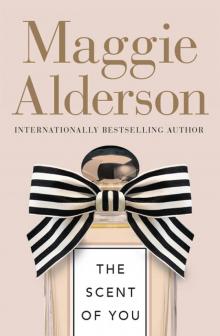 The Scent of You
The Scent of You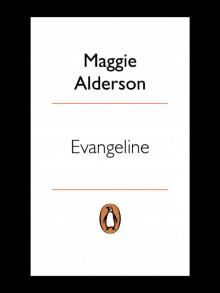 Evangeline Wish Keeper's Helper
Evangeline Wish Keeper's Helper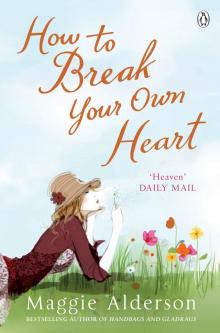 How to Break Your Own Heart
How to Break Your Own Heart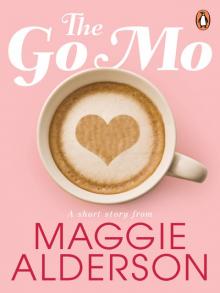 The GoMo
The GoMo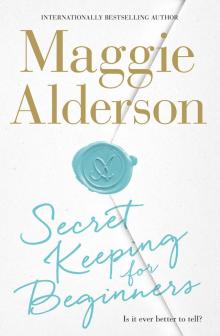 Secret Keeping for Beginners
Secret Keeping for Beginners Pants on Fire
Pants on Fire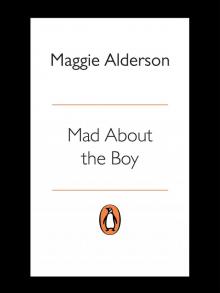 Mad About the Boy
Mad About the Boy Handbags and Gladrags
Handbags and Gladrags Cents and Sensibility
Cents and Sensibility